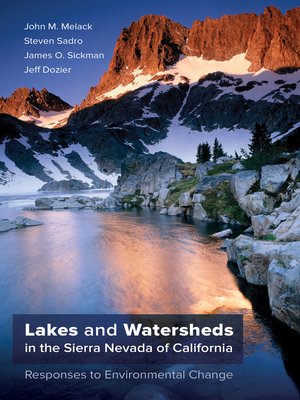Lakes and Watersheds in the Sierra Nevada of California
ebook ∣ Responses to Environmental Change · Freshwater Ecology Series
By John M. Melack

Sign up to save your library
With an OverDrive account, you can save your favorite libraries for at-a-glance information about availability. Find out more about OverDrive accounts.
Find this title in Libby, the library reading app by OverDrive.



Search for a digital library with this title
Title found at these libraries:
| Library Name | Distance |
|---|---|
| Loading... |
The Sierra Nevada, California's iconic mountain range, harbors thousands of remote high-elevations lakes from which water flows to sustain agriculture and cities. As climate and air quality in the region change, so do the watershed processes upon which these lakes depend. In order to understand the future of California's ecology and natural resources, we need an integrated account of the environmental processes that underlie these aquatic systems.
Synthesizing over three decades of research on the lakes and watersheds of the Sierra Nevada, this book develops an integrated account of the hydrological and biogeochemical systems that sustain them. With a focus on Emerald Lake in Sequoia National Park, the book marshals long-term limnological and ecological data to provide a detailed and synthetic account, while also highlighting the vulnerability of Sierra lakes to changes in climate and atmospheric deposition. In so doing, it lays the scientific foundations for predicting and understanding how the lakes and watersheds will respond.
Synthesizing over three decades of research on the lakes and watersheds of the Sierra Nevada, this book develops an integrated account of the hydrological and biogeochemical systems that sustain them. With a focus on Emerald Lake in Sequoia National Park, the book marshals long-term limnological and ecological data to provide a detailed and synthetic account, while also highlighting the vulnerability of Sierra lakes to changes in climate and atmospheric deposition. In so doing, it lays the scientific foundations for predicting and understanding how the lakes and watersheds will respond.







